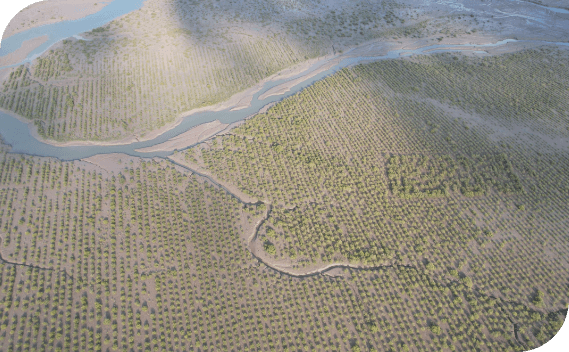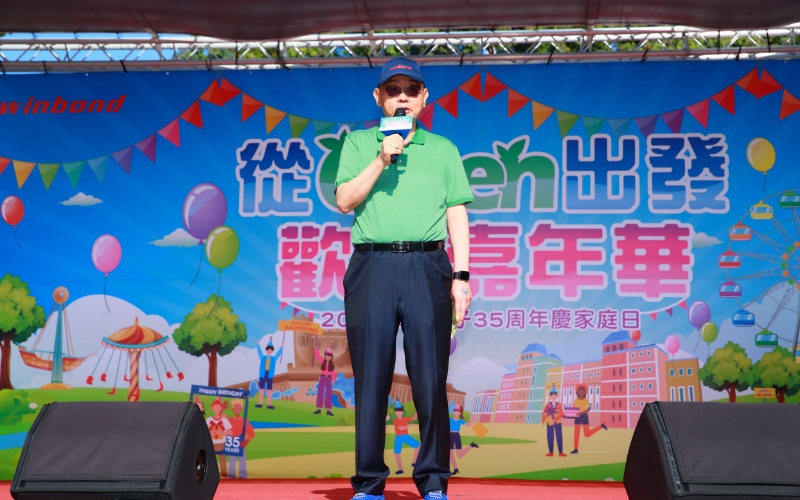Winbond began acquiring international voluntary carbon credits in 2022 and established internal voluntary carbon credit investment standards in 2024
Acquisition of International Voluntary Carbon Credits in 2022
 Since 2022, Winbond acquired a total of 13,500 metric tons of CO₂e from voluntary carbon credit projects across nine countries in Asia and Africa.
Since 2022, Winbond acquired a total of 13,500 metric tons of CO₂e from voluntary carbon credit projects across nine countries in Asia and Africa.
In response to the global carbon neutrality trend and the 2050 net-zero target, Winbond joined the Climate Impact X (CIX) platform in Singapore in 2022 and continued to participate in international carbon credit trading. In 2023, Winbond became the first corporate buyer of international carbon credits on the Taiwan Carbon Solution Exchange (TCX). As of the end of 2024, Winbond had acquired a cumulative total of 13,500 metric tons of CO₂e from voluntary carbon credit projects across nine countries in Asia and Africa.
The carbon credits acquired by Winbond were issued by internationally recognized independent organizations such as Verra and Gold Standard. These projects included nature conservation, efficient cookstoves, clean water access, solar power, and wind energy. In addition to offsetting corporate emissions, Winbond aimed to generate multiple sustainability benefits, including terrestrial and marine ecosystem protection, restoration of water-related ecosystems, investment in energy infrastructure and clean technologies, and respect for local community rights. The projects covered 16 out of the 17 United Nations Sustainable Development Goals (SDGs).
While focusing on the semiconductor industry, Winbond continued to allocate stable resources to support global carbon reduction initiatives, contributing to the sustainable survival and development of the planet.

The carbon credit projects included international voluntary initiatives such as nature conservation, efficient cookstoves, clean water access, solar power, and wind energy.
 Carbon Credit Investment Story:
Carbon Credit Investment Story:
Delta Blue Carbon – The World's Largest Blue Carbon Project
The DeltaBlueCarbon-1 (DBC-1) project was a large-scale afforestation and restoration initiative targeting mangroves and wetlands in the Indus River Delta region of Pakistan. Covering 350,000 hectares, the project aimed to reduce over 142 million metric tons of CO₂e over its 60-year duration from 2015 to 2075.
The Indus River Delta comprised a rich ecosystem of river channels, low-lying islands, intertidal zones, and mangroves. It hosted the world’s largest arid-climate mangrove forest and served as a major migratory route for thousands of bird species. Mangrove deforestation in the region was driven by fuelwood harvesting, livestock grazing, and fodder collection. Over 42,000 people lived in 60 coastal villages within the project area, with more than 70% living below the poverty line. Many communities lacked access to clean drinking water, basic education, sanitation, and healthcare, and relied heavily on agriculture. Freshwater depletion increased soil salinity in mangroves and the delta, leading to declining agricultural and fishery yields.
The DBC-1 project sought to regenerate mangroves and address the drivers of deforestation and degradation. Through reforestation of over 224,000 hectares of mangroves and active participation of local communities in planning and implementation, the project aimed to preserve biodiversity in this critical ecological zone.

 Image source: Photo courtesy of Delta Blue Carbon Project
Image source: Photo courtesy of Delta Blue Carbon ProjectIntroduction to Blue Carbon
Blue carbon ecosystems typically occur in coastal wetlands dominated by mangroves, salt marshes, and seagrasses. Like terrestrial forests, these ecosystems stored carbon through biomass, but uniquely captured upstream flowing carbon, functioning as natural filters in expansive river deltas. With dual carbon capture mechanisms, coastal wetlands removed carbon 40 times faster than terrestrial forests, making blue carbon projects among the most effective and valuable carbon removal systems. Additionally, coastal wetlands helped buffer surrounding environments from climate change impacts.
| Category | Description |
|---|---|
| Carbon Credit Certification | VCS-2250 (CCB) |
| Location | Pakistan |
| Type |
|
| Issuance Years | 2016–2021 |
| Local Residents with Access to Safe Drinking Water | 400 |
| Beneficiaries of Increased Fishery Yields | 34,600 |
Expected Carbon Removal Over 60-Year Project Duration
Local Residents Benefiting from the Project
Beneficiaries of Improved Health Conditions
Protected and Restored Area in the Indus River Delta
Establishment of Internal Voluntary Carbon Credit Investment Standards in 2024
Since 2022, Winbond established internal procedures for carbon credit trading, defining roles and responsibilities, authorization limits, and internal control mechanisms. In 2023, in response to global trends in high-quality carbon credit investment strategies, Winbond further enhanced and formalized its internal investment standards.
Objectives
- Optimize internal procedures to avoid purchasing controversial carbon credits
- Develop internal carbon credit checklists as the basis for future procurement
| Evaluation Criteria | Remarks |
|---|---|
Certification body must meet one of the following:
| Mandatory |
| Vintage: Issuance year of the carbon credit must be within five years of the transaction year | Mandatory |
| United Nations SDGs: Must contribute to three or more SDGs | Mandatory |
Risk Management:
| Mandatory |
High-Quality Carbon Credit Standards:
| Preferred |
International Carbon Ratings:
| Preferred |












